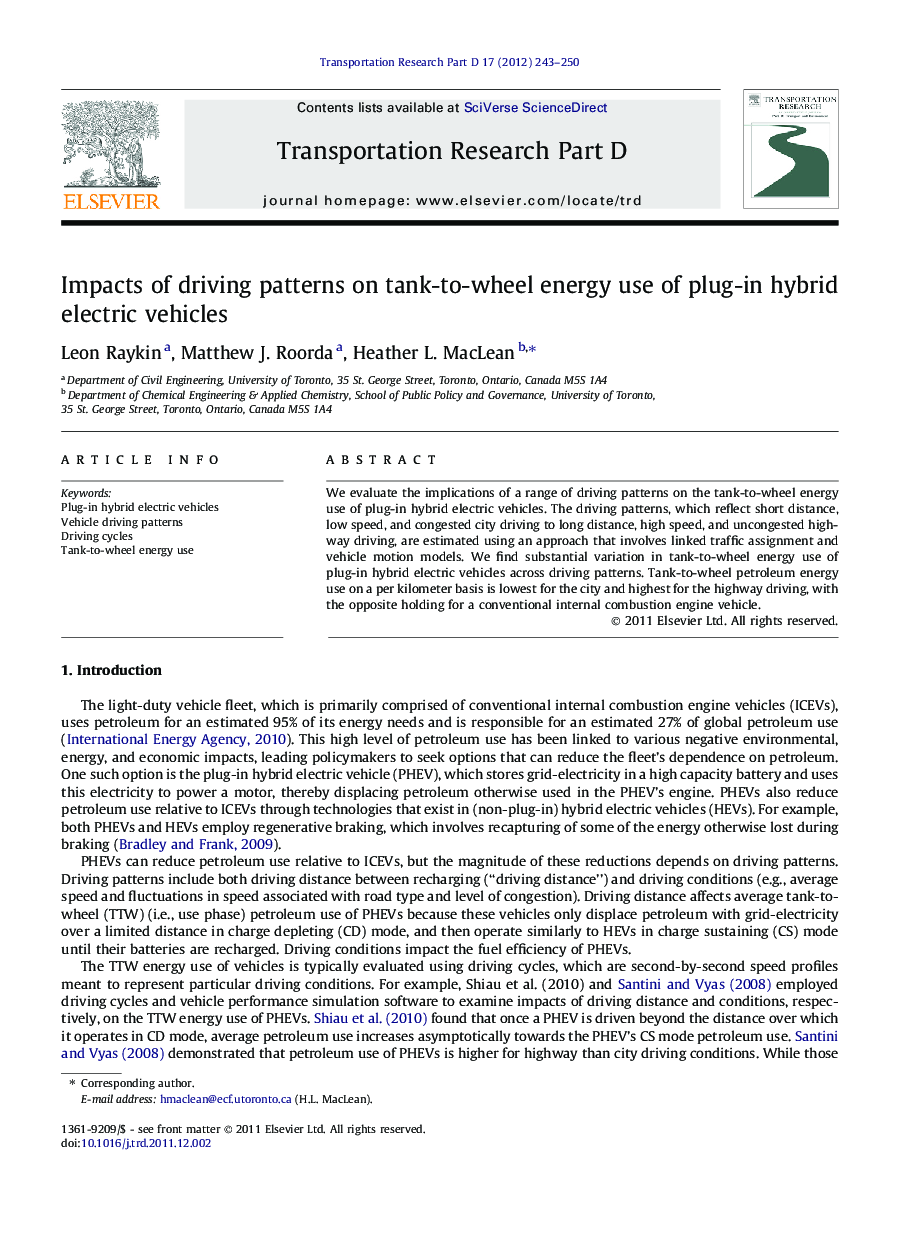| کد مقاله | کد نشریه | سال انتشار | مقاله انگلیسی | نسخه تمام متن |
|---|---|---|---|---|
| 1066109 | 948672 | 2012 | 8 صفحه PDF | دانلود رایگان |

We evaluate the implications of a range of driving patterns on the tank-to-wheel energy use of plug-in hybrid electric vehicles. The driving patterns, which reflect short distance, low speed, and congested city driving to long distance, high speed, and uncongested highway driving, are estimated using an approach that involves linked traffic assignment and vehicle motion models. We find substantial variation in tank-to-wheel energy use of plug-in hybrid electric vehicles across driving patterns. Tank-to-wheel petroleum energy use on a per kilometer basis is lowest for the city and highest for the highway driving, with the opposite holding for a conventional internal combustion engine vehicle.
► Impacts of driving patterns on energy use of plug-in hybrid vehicles are examined.
► A wide range of driving patterns is estimated using a traffic assignment approach.
► City driving results in lower plug-in hybrid energy use than highway driving.
► Relative to a conventional vehicle petroleum savings are largest for city driving.
► Both driving distance and conditions affect these trends.
Journal: Transportation Research Part D: Transport and Environment - Volume 17, Issue 3, May 2012, Pages 243–250